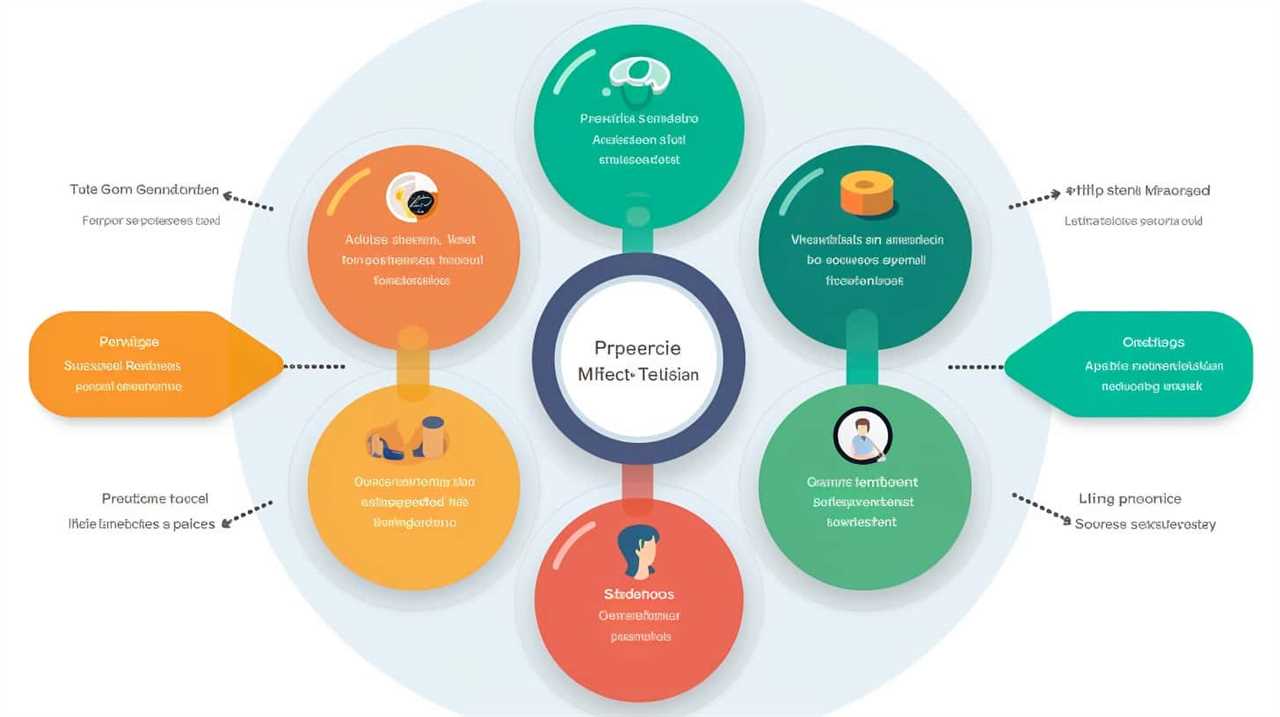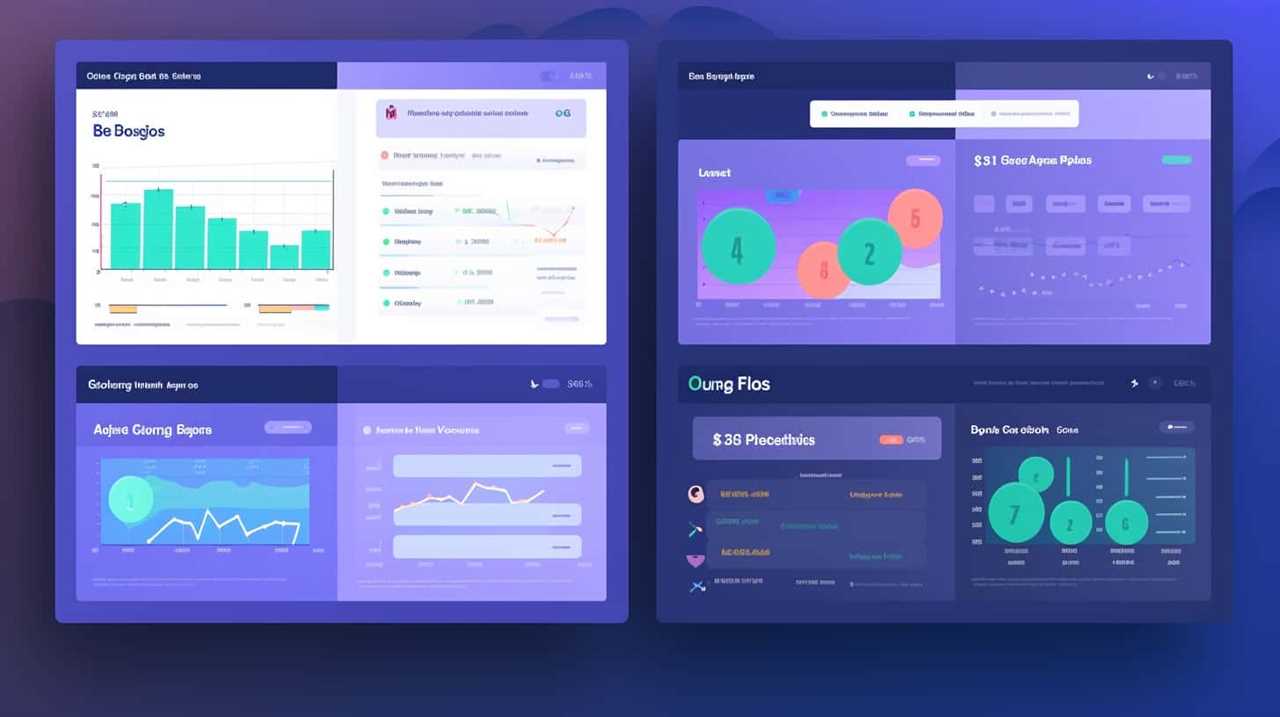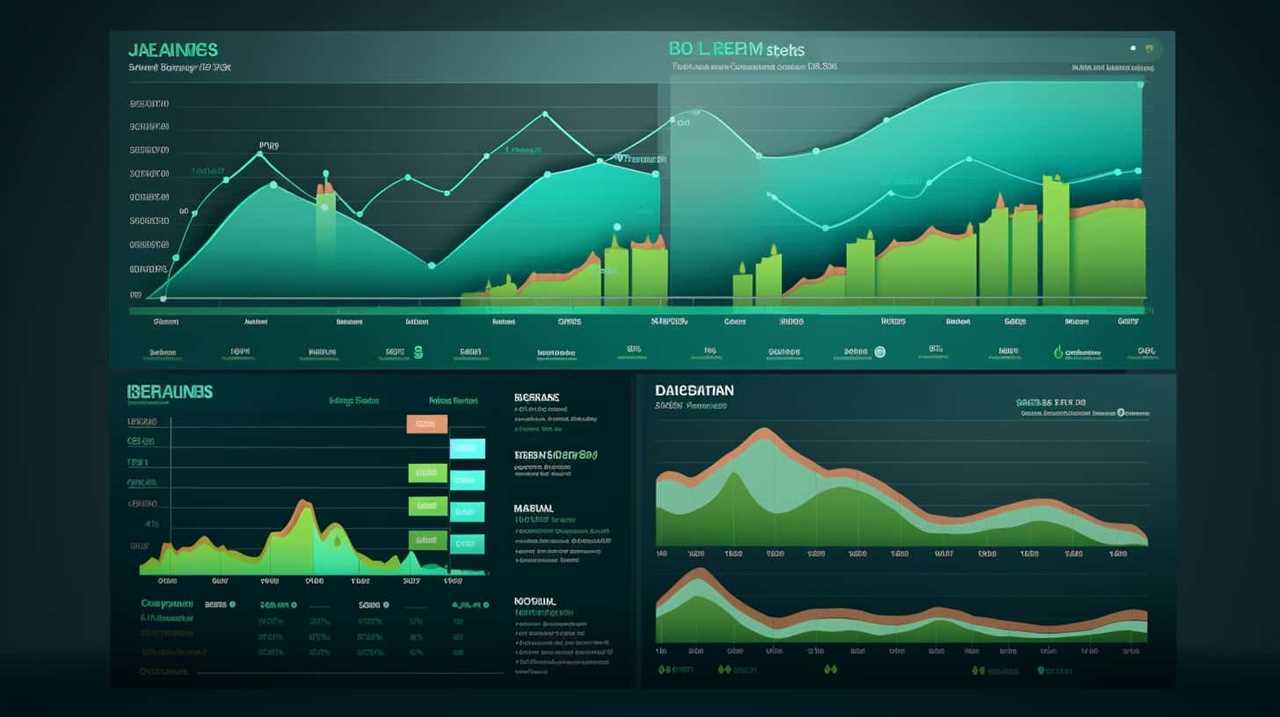- Importance of visual storytelling in comic book ads
- Incorporating unique branding elements into ad campaigns
Hello! Are you keen on uncovering the key to success as an independent comic book creator? Search no more, because Google Ads is the answer you’ve been looking for.
With its powerful targeting tools and endless possibilities, Google Ads can help you reach your ideal audience and boost your comic book sales like never before.
In this article, I’ll show you how to set up your account, create compelling ad copy and visuals, and even share some case studies of successful campaigns.
So, let’s dive in and master the art of Google Ads!

Key Takeaways
- Powerful targeting tools in Google Ads can help independent comic book creators reach their desired audience effectively.
- Real-time analytics and performance tracking provided by Google Ads enables data-driven decision-making for better results.
- Tailoring ads to specific demographics and interests can increase the chances of conversion and higher engagement from the target audience.
- Successful case studies of comic book creators using Google Ads demonstrate increased sales, fan engagement, and global reach through targeted campaigns.
The Benefits of Google Ads for Comic Book Creators
I have personally experienced the invaluable benefits of utilizing Google Ads as an independent comic book creator. One of the major advantages is the ability to target a specific audience through niche marketing. As a comic book creator, I’ve a unique target audience who are passionate about comics, superheroes, and graphic storytelling. With Google Ads, I can narrow down my audience to those who’ve shown an interest in these topics, ensuring that my ads reach the right people.
Another benefit of using Google Ads is the ability to measure ad effectiveness. Through the platform’s analytics tools, I can track the performance of my ads in real-time. I can see how many people clicked on my ads, how many conversions I received, and the overall return on investment. This data allows me to make informed decisions and optimize my ad campaigns for better results.
Furthermore, Google Ads provides valuable insights into customer behavior. I can see which keywords and ad placements are driving the most engagement, allowing me to refine my targeting strategy and create more effective ads. This level of data-driven decision-making is crucial for success in today’s competitive digital landscape.
Understanding Your Target Audience
To effectively utilize Google Ads as an independent comic book creator, it’s crucial to gain a deep understanding of your target audience. Understanding audience demographics and identifying target keywords are key components to successfully reaching and engaging with your audience.

By understanding the demographics of your audience, such as their age, gender, and interests, you can tailor your ads to their specific needs and preferences. This allows you to create targeted campaigns that resonate with your audience and increase the chances of conversion.
Identifying target keywords is another important aspect of understanding your audience. By researching and selecting relevant keywords that align with your comic book’s genre, themes, and characters, you can ensure that your ads are displayed to the right people. This increases the likelihood of attracting individuals who are genuinely interested in your comic book and are more likely to make a purchase.
Setting Up Your Google Ads Account
Before diving into setting up your Google Ads account, it’s important to consistently monitor and analyze the performance of your targeted campaigns. Understanding the Google Ads interface and setting up conversion tracking are crucial steps for independent comic book creators to maximize their advertising efforts.
To begin, let’s take a look at the Google Ads interface. It provides a user-friendly platform that allows you to manage your ad campaigns, ad groups, and keywords. You can easily create and edit your ads, set your budget, and monitor the performance of your campaigns. Familiarizing yourself with the various features and tools within the interface will help you navigate and optimize your ads effectively.

Next, let’s talk about setting up conversion tracking. This feature enables you to measure the success of your campaigns by tracking specific actions that users take on your website, such as making a purchase or signing up for a newsletter. By setting up conversion tracking, you can gain valuable insights into the effectiveness of your ads and make data-driven decisions to improve your campaign performance.
In order to set up conversion tracking, you’ll need to install a tracking code on your website and define the desired actions as conversions. Google Ads provides step-by-step instructions to guide you through this process, ensuring accurate tracking and measurement of your campaign results.
Creating Compelling Ad Copy and Visuals
When it comes to creating compelling ad copy and visuals, there are a few key points to keep in mind.
First, effective ad storytelling is crucial in capturing the attention of potential customers.

Second, captivating graphics and text can make a significant impact in grabbing the viewer’s interest.
Finally, conveying your unique selling points in a clear and concise manner will help differentiate your comic book from the competition.
Let’s explore each of these points further to understand how they can contribute to the success of your Google Ads campaign.
Effective Ad Storytelling
In my experience as an independent comic book creator, crafting compelling ad copy and visuals is essential for effective ad storytelling in Google Ads. Ad storytelling techniques allow me to captivate my audience and convey the unique narrative of my comic book.

By using language that’s engaging, concise, and persuasive, I can create ads that resonate with potential readers. Additionally, storytelling through visuals plays a crucial role in grabbing attention and conveying the essence of my comic book. Through carefully chosen images and illustrations, I can evoke emotions and spark curiosity, enticing viewers to click on my ad and explore my work further.
Captivating Graphics and Text
Crafting captivating graphics and text is essential for creating compelling ad copy and visuals as an independent comic book creator using Google Ads. As comic book ads rely heavily on visual storytelling, it is crucial to convey the emotions and narratives of your comic through eye-catching visuals. Incorporating unique branding elements into your ad campaigns can also help you stand out and establish a strong brand identity. To keep your audience engaged, consider using a combination of stunning artwork, bold typography, and concise, attention-grabbing text. Here is a table that showcases the importance of visual storytelling and incorporating unique branding elements in comic book ads:
| Importance of Visual Storytelling | Incorporating Unique Branding Elements |
|---|---|
| It captures readers’ attention | It distinguishes your comic from others |
| It conveys the emotions and narratives of your comic | It helps build brand recognition |
| It creates a memorable and immersive experience | It establishes a strong brand identity |
Conveying Unique Selling Points
To effectively convey my comic book’s unique selling points, I craft compelling ad copy and visuals that captivate potential readers. Through careful consideration and meticulous planning, I aim to create persuasive messaging that resonates with my target audience.
Here are five key strategies I employ to evoke emotion and engage my readers:

- Creating visually stunning artwork that grabs attention and leaves a lasting impression.
- Crafting compelling and concise ad copy that highlights the unique aspects of my comic book.
- Incorporating relatable and intriguing characters that readers can connect with on an emotional level.
- Showcasing exciting and action-packed scenes to generate anticipation and excitement.
- Utilizing vibrant colors and dynamic compositions to evoke a sense of energy and immersion.
Choosing the Right Keywords for Your Campaign
When it comes to running a successful Google Ads campaign as an independent comic book creator, choosing the right keywords is crucial.
Effective keyword research allows you to understand what terms your target audience is using to search for content like yours.
By targeting niche keywords, you can reach a more specific audience who are more likely to be interested in your comic books.
And finally, tracking keyword performance helps you optimize your campaign by identifying which keywords are generating the most clicks and conversions.

Effective Keyword Research
One of the most crucial steps in running a successful Google Ads campaign as an independent comic book creator is selecting the right keywords. Keywords are the foundation of your campaign and determine who sees your ads.
Here are some effective strategies to consider:
- Long tail keywords for specific comic book genres: By using specific keywords like ‘sci-fi graphic novels’ or ‘fantasy superhero comics,’ you can target a niche audience who’s more likely to be interested in your work.
- Using negative keywords to refine your audience targeting: Negative keywords help you exclude irrelevant searches, ensuring that your ads are shown to the right people. For example, if you create adult-oriented comics, you can add ‘kids’ as a negative keyword to avoid showing your ads to an inappropriate audience.
Targeting Niche Audience
I target a niche audience for my independent comic book campaign by choosing the right keywords that resonate with my specific genre and audience. By targeting specific interests and reaching niche markets, I can maximize the effectiveness of my Google Ads campaign and ensure that my comic book gets in front of the right people.
To illustrate how I choose the right keywords for my campaign, I have created a table below:

| Genre | Keywords |
|---|---|
| Superheroes | superhero, powers |
| Fantasy | magic, mythical |
| Sci-Fi | aliens, futuristic |
| Horror | monsters, suspense |
By selecting keywords that align with the genre and interests of my target audience, I can increase the chances of my ads being shown to people who are most likely to be interested in my comic book. This targeted approach helps me to optimize my campaign and achieve better results.
In the next section, I will discuss the importance of tracking keyword performance to further refine my campaign and maximize its effectiveness.
Tracking Keyword Performance
To maximize the effectiveness of my independent comic book campaign, I track the performance of keywords to ensure I’m choosing the right ones for my Google Ads campaign. Keyword analysis is crucial for campaign optimization, as it helps me understand which keywords are driving the most traffic and conversions.
Here are some key reasons why tracking keyword performance is essential:

- Identifying high-performing keywords that generate the most clicks and conversions
- Uncovering low-performing keywords that are wasting ad spend
- Adjusting bids and budgets based on keyword performance to maximize ROI
- Discovering new keyword opportunities that align with my target audience
- Monitoring keyword trends and competition to stay ahead of the game
By closely monitoring keyword performance, I can make data-driven decisions to optimize my campaign and drive success.
Now, let’s explore the targeting options for comic book creators to further enhance our Google Ads strategy.
Targeting Options for Comic Book Creators
When using Google Ads, independent comic book creators can effectively target their desired audience through a variety of options. As indie comic book creators, our goal is to reach a global audience with our unique stories and artwork. Luckily, Google Ads provides us with the tools to do just that. With the targeting options available, we can ensure that our ads are seen by the right people at the right time.
One targeting option that’s particularly useful for comic book creators is geographic targeting. This allows us to specify the locations where our ads will be shown. Whether we want to focus on a specific country, city, or even a radius around a particular location, Google Ads gives us the flexibility to reach our desired audience.

Another valuable targeting option is demographic targeting. We can choose to display our ads to people based on factors such as age, gender, and interests. This helps us narrow down our audience and ensure that our ads are seen by those who are most likely to be interested in our comic books.
In addition to geographic and demographic targeting, Google Ads also offers other options such as device targeting, where we can choose to show our ads on specific devices, and time targeting, where we can schedule our ads to appear during certain times of the day or week.
Budgeting and Bidding Strategies
Continuing the discussion from the previous subtopic, comic book creators like me can strategically allocate their budget and implement effective bidding strategies for Google Ads campaigns. Maximizing ad spend and optimizing bidding strategies are crucial steps to ensure the success of our advertising efforts. Here are some key strategies to consider:
- Setting a realistic budget: It’s important to allocate a budget that aligns with our advertising goals and financial capabilities. This helps us make the most out of our ad spend without overspending.
- Monitoring and adjusting bids: Regularly monitoring our campaigns allows us to identify underperforming ads and adjust our bids accordingly. By optimizing our bids, we can ensure that our ads are shown to the right audience at the right time.
- Utilizing bid adjustments: Bid adjustments allow us to target specific audiences or demographics more effectively. By adjusting our bids based on factors such as device, location, or time of day, we can reach our target audience more efficiently.
- Experimenting with different bidding strategies: Google Ads offers various bidding strategies, including manual bidding, automated bidding, and enhanced cost-per-click (ECPC). Experimenting with different strategies helps us find the most effective approach for our campaigns.
- Leveraging data and analytics: By analyzing our campaign data and leveraging the insights provided by Google Ads, we can make informed decisions and optimize our bidding strategies for better results.
Implementing these strategies and continuously refining them allows us to make the most out of our ad spend and maximize the success of our Google Ads campaigns as independent comic book creators.

Monitoring and Optimizing Your Ads
When it comes to running successful Google Ads campaigns, monitoring and optimizing your ads is crucial.
It’s not enough to simply set up your ads and let them run. You need to constantly track their performance, making adjustments as needed to ensure they’re reaching the right audience and generating the desired results.
A/B testing strategies can also help you identify what works best, allowing you to refine your ads for maximum effectiveness.
With the ability to adjust ad targeting based on performance data, you can optimize your ads to reach the right people at the right time.

Tracking Ad Performance
To effectively monitor and optimize my Google Ads as an independent comic book creator, I rely on tracking ad performance. It’s crucial for me to measure the effectiveness of my ads and make improvements where necessary. Here are some key strategies I use to ensure I’m getting the most out of my ad campaigns:
- Analyzing click-through rates: By monitoring how many people are clicking on my ads, I can gauge their effectiveness and identify any areas for improvement.
- Tracking conversion rates: Measuring how many clicks actually lead to a desired action, such as a purchase or sign-up, helps me understand the true impact of my ads.
- Testing different ad variations: I constantly experiment with different ad copies and visuals to see which ones resonate best with my target audience.
- Monitoring keyword performance: By tracking which keywords are driving the most traffic and conversions, I can refine my ad targeting to reach the right people.
- Utilizing analytics tools: I rely on tools like Google Analytics to gain deeper insights into user behavior and make data-driven decisions for my ad campaigns.
A/B Testing Strategies
I continuously improve the effectiveness of my Google Ads by implementing A/B testing strategies to monitor and optimize my ads. A/B testing involves comparing two versions of an ad to see which one performs better. This allows me to make data-driven decisions and improve the overall performance of my ads. By measuring ad effectiveness, I can understand what resonates with my target audience and make necessary adjustments to maximize conversions. A/B testing can be done by changing variables such as headlines, images, ad copy, or call-to-action buttons. By testing these different elements, I can identify what works best and make informed decisions to optimize my ads for better results.
To give you a clearer picture, here’s a table that demonstrates how A/B testing strategies can be applied:
| Variable | Version A | Version B |
|---|---|---|
| Headline | "Get Your Comic Book Today!" | "Discover the World of Comics" |
| Image | Comic book cover | Illustration of main character |
| Ad Copy | "Limited Edition Collectors Item!" | "Join the Adventure Today!" |
| Call-to-Action | "Buy Now" | "Learn More" |
Adjusting Ad Targeting
To further enhance the effectiveness of my Google Ads, I continuously monitor and optimize my ad targeting strategies. This allows me to reach the right audience with precision and maximize the impact of my ads. Here are five key ways I adjust my ad targeting to ensure success:

- Audience Segmentation: I divide my target audience into specific segments based on demographics, interests, and behavior.
- Location Targeting: I narrow down my ads to specific geographical areas where my comic book is likely to resonate the most.
- Device Optimization: I analyze the performance of my ads on different devices and adjust my targeting accordingly to reach users on their preferred devices.
- Ad Schedule Optimization: I review the performance of my ads at different times of the day and adjust the schedule to reach my audience when they’re most active.
- Keyword Refinement: I continuously refine and optimize my keywords to ensure my ads are shown to the most relevant audience.
Tracking Conversions and ROI
Tracking conversions and ROI allows independent comic book creators to measure the effectiveness of their Google Ads campaigns. By tracking conversions, creators can determine the number of desired actions that result from their ads, such as purchases, sign-ups, or downloads. This data provides valuable insights into the success of their campaigns and allows them to make informed decisions to optimize their ad performance.
To effectively track conversions and ROI, independent comic book creators can use Google Ads’ conversion tracking feature. This feature allows them to set up conversion actions, such as completed purchases or newsletter sign-ups, and track how many times these actions occur as a result of their ads. By linking their Google Ads account with their website or landing page, creators can accurately measure the impact of their ads on their desired outcomes.
Additionally, independent comic book creators can calculate their return on investment (ROI) to determine the profitability of their Google Ads campaigns. ROI is calculated by subtracting the cost of advertising from the revenue generated and dividing it by the cost of advertising. This metric helps creators understand the financial impact of their campaigns and make informed decisions about their advertising budget.
Tracking conversions and ROI is essential for independent comic book creators to measure the effectiveness of their Google Ads campaigns and make data-driven decisions to enhance their ad performance. The table below summarizes the key benefits of tracking conversions and ROI:

| Benefit | Description |
|---|---|
| Measuring campaign effectiveness | Allows creators to evaluate the success of their ads and make informed decisions to optimize their campaigns |
| Enhancing ad performance | Provides insights to improve ad targeting, messaging, and creative elements for better results |
| Determining return on investment (ROI) | Helps creators evaluate the financial impact of their campaigns and make informed decisions about their budget |
Leveraging Google Ad Extensions
To further maximize the effectiveness of my Google Ads campaigns as an independent comic book creator, I can leverage various Google Ad Extensions. These extensions provide additional information and features that enhance my ads and attract more potential readers.
Here are five ways I can leverage ad extensions to optimize my ad placements:
- Sitelink Extensions: By adding relevant sitelinks to my ads, I can direct users to specific pages on my website, such as my latest comic releases or a sneak peek of upcoming issues.
- Callout Extensions: I can highlight unique selling points, such as limited edition variant covers or exclusive merchandise, to entice comic book enthusiasts.
- Location Extensions: If I’ve a physical store or will be attending comic book conventions, I can display my address and contact information to drive foot traffic and connect with local fans.
- Promotion Extensions: To create a sense of urgency, I can showcase limited-time offers or discounts on selected comic book series, encouraging readers to make a purchase.
- Review Extensions: By featuring positive reviews from satisfied readers or reputable comic book reviewers, I can build trust and credibility, increasing the likelihood of conversions.
By leveraging these ad extensions, I can optimize my ad placements and capture the attention of my target audience.
Now, let’s explore how remarketing can further engage and convert potential readers.

Remarketing to Engage and Convert
I engage and convert potential readers by implementing remarketing strategies in my Google Ads campaigns as an independent comic book creator.
Remarketing allows me to reconnect with people who’ve already shown an interest in my work, keeping them engaged and increasing the chances of conversion.
One effective remarketing strategy I employ is showing targeted ads to those who’ve visited my website but haven’t made a purchase or signed up for my newsletter. By reminding them of my comic book series and highlighting its unique features, I can reignite their interest and encourage them to take the next step.
Another tactic I utilize is displaying ads to individuals who’ve already made a purchase. These ads could showcase related merchandise or offer discounts on future purchases, encouraging repeat business and fostering customer loyalty.

To maximize the impact of my remarketing efforts, I ensure that my ads are visually appealing and tailored to specific audience segments. By delivering personalized messages to potential readers, I create a sense of connection and relevance, increasing the likelihood of engagement and conversion.
A/B Testing for Continuous Improvement
Continuously refining my Google Ads campaigns through A/B testing is essential for optimizing their performance and driving greater success as an independent comic book creator. A/B testing allows me to test different elements of my ads and landing pages to see which versions perform better. By analyzing the data from these tests, I can make informed decisions on how to improve my campaigns and achieve better results.
Here are some reasons why A/B testing is crucial for continuous improvement:
- It helps me understand what resonates with my target audience, allowing me to tailor my ads to their preferences.
- It enables me to identify and eliminate underperforming ads, saving me money and resources.
- It allows me to test different strategies and approaches to see which ones are most effective in driving conversions.
- It provides valuable insights into customer behavior, helping me make data-driven decisions.
- It helps me stay ahead of the competition by constantly optimizing and adapting my campaigns.
By consistently analyzing the data and making adjustments based on the results of A/B tests, I can ensure that my Google Ads campaigns are constantly improving and driving the success of my comic book creations.

Now, let’s dive into some case studies of successful Google Ads campaigns for comic book creators.
Case Studies: Successful Google Ads Campaigns for Comic Book Creators
By analyzing the data from A/B testing, I’ve discovered several successful Google Ads campaigns for comic book creators. These case studies highlight the power of effective advertising in promoting independent comic books and reaching a wider audience.
One notable success story is that of an indie comic book creator who used Google Ads to generate significant sales and increase brand awareness. By strategically targeting keywords related to their comic book genre and utilizing compelling ad copy, they were able to capture the attention of their target audience and drive traffic to their website. The campaign resulted in a substantial increase in website visits, which translated into a significant boost in sales.
Another case study involved a comic book creator who used Google Ads to promote a crowdfunding campaign for their upcoming graphic novel. By leveraging the targeting capabilities of Google Ads, they were able to reach potential backers who’d shown interest in similar projects. This highly targeted approach resulted in a surge of pledges and a successful crowdfunding campaign.

Measuring the effectiveness of these ad campaigns was crucial in determining their success. By closely monitoring metrics such as click-through rates, conversion rates, and return on ad spend, these creators were able to optimize their campaigns and achieve impressive results.
These case studies demonstrate that successful ad campaigns can have a profound impact on the success of independent comic book creators. By leveraging the power of Google Ads and measuring ad effectiveness, comic book creators can effectively promote their work, reach a wider audience, and achieve their goals.
Frequently Asked Questions
How Long Does It Take to See Results From a Google Ads Campaign for Comic Book Creators?
It typically takes a few weeks to see results from a Google Ads campaign for comic book creators. By measuring effectiveness and optimizing for visibility and engagement, success can be achieved in a timely manner.
Are There Any Limitations on the Type of Visuals That Can Be Used in Google Ads for Comic Book Creators?
When it comes to visuals in Google ads for comic book creators, there are some limitations. The impact of visual content is crucial, but it’s important to adhere to Google’s guidelines for ad creatives.

Can Google Ads Help Me Reach International Audiences for My Comic Book Creations?
Yes, Google Ads can definitely help me reach international audiences for my comic book creations. Through Comic book marketing: Exploring the impact of Google Ads on sales, I can expand my comic book’s international fanbase with its global reach.
What Are the Best Practices for Targeting Specific Demographics With Google Ads for Comic Book Creators?
Targeting specific demographics with Google Ads for comic book creators requires effective ad copy and strategic targeting strategies. By understanding your audience’s interests and behaviors, you can create engaging ads that speak directly to them, increasing your chances of success.
Is It Possible to Track the Number of Comic Book Sales Generated Directly From Google Ads?
Yes, it is possible to track the number of comic book sales generated directly from Google Ads. By implementing conversion tracking and analyzing the data, I can measure the success of my ads in driving sales.
Conclusion
In conclusion, Google Ads offers independent comic book creators a powerful tool to reach their target audience and achieve success.

By understanding their audience, creating compelling ad copy, and leveraging extensions and remarketing, creators can engage and convert readers.
A/B testing allows for continuous improvement and fine-tuning of campaigns.
With the right strategy and execution, comic book creators can illustrate success and make their mark in the industry with the help of Google Ads.








